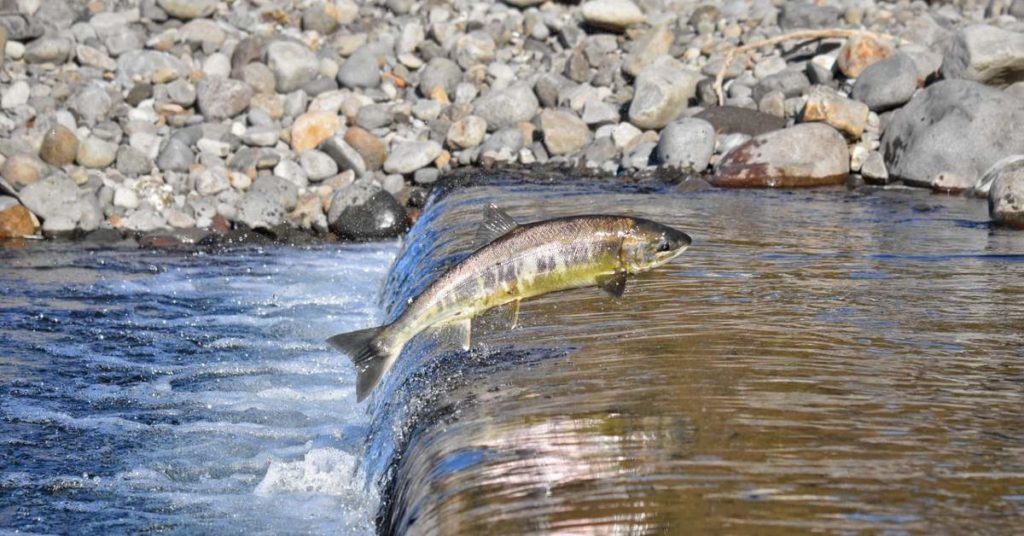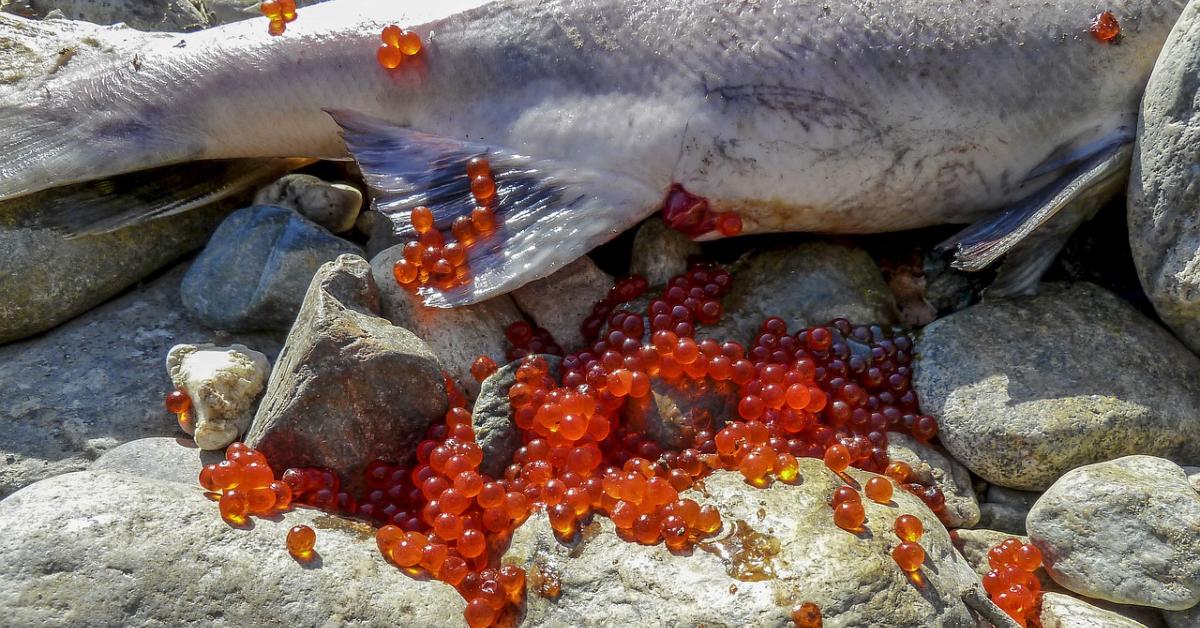To preserve the dwindling populations of wild Atlantic salmon, we must first understand their life cycle.
Spawning occurs in late winter and early spring when adult salmon return to the streams where they were born. There, they lay eggs in sheltered areas among rocks and gravel. The eggs hatch within a few weeks, and the tiny fry quickly begin to feed on live insects.
As they grow, the fry move into progressively deeper water. In late summer and fall, they migrate back to the streams where they were born, where they spend a year or so before moving out to the lake, again seeking deeper water.
Wild Atlantic Salmon Life Cycle
The Atlantic salmon is an anadromous fish that spends part of its life in freshwater and the other part in the ocean. After hatching and growing in a gravel bed river, the juvenile salmon spend their first year or two in the river before swimming out to sea.
They will typically stay at sea for 2-6 years, feeding on small fish and crustaceans, before returning to their natal rivers to spawn. Salmon spawning occurs in late autumn/early winter, and the eggs hatch in late winter/early spring. When the eggs hatch, the larval fish (alevine) emerge from the gravel and drift downstream until they eventually reach the sea.
The life cycle of wild Atlantic salmon is one filled with wonder and amazement. From their birth in freshwater streams to their migration to the ocean and eventual return as adults, these fish are constantly on the move.
Along the way, they must navigate a complex web of obstacles, all while evading predators. This journey is far from easy, and in many cases only a small percentage of salmon manage to make it back to their homes. Despite the challenges, this life cycle provides a valuable lesson for us all.
The Egg Stage
The Atlantic salmon is an anadromous fish that typically spends 2-3 years in freshwater before migrating to the ocean as a silvery smolt. After an additional 1-3 years at sea it returns to its natal river to spawn. Fertilized eggs hatch in nests called redds in March or April.
The Alevin Stage
The period after hatching from the egg, the salmon is referred to as an alevin and it remains entirely dependent upon the yolk sac for nutrition. Alevin remain buried in the gravel until transitioning to the next phase of development.
The Fry Stage
As the alevins transition to fry, they remain buried in the gravel for approximately six weeks. They emerge from the gravel about mid-May and feed on plankton and small invertebrates. Emergent fry quickly disperse from the nests within the gravel.
The Parr Stage
Next, the fry develop camouflaging stripes along their sides and then enter the parr stage. Parr habitat is typically shallow riffle areas with adequate cover, and moderate-to-fast water flow.
Salmon parr spend 1-3 years in freshwater and then undergo a physiological transformation called smoltification that prepares them for life in a marine habitat.
The Smolt Stage
During the process called smoltification, the camouflage used by fish to blend in with the stream disappears. It is replaced with silvery sides to make the fish more suitable to life at sea. Gills change to make fish ready for saltwater and they begin to swim with the current as opposed to against it.
Ultimately all fish meet the ocean where they begin feeding on plankton. Big fish eat little fish, and in time smolt feed on larger fish such as herring and alewives among others.
The Adult Stage
Atlantic salmon leave Maine rivers in the spring and reach Newfoundland and Labrador by mid-summer. They spend their first winter at sea, west of Greenland.

At sea, salmon feed on a variety of foods which range from squid, sand eels, shrimp and herring. A small percentage of adult salmon return to Maine after one year while the majority spend a second year at sea. One year at sea fish are known as grilse, while two year at sea fish are known as multi-sea winter salmon.
Some Maine salmon are also found in waters along the Labrador coast. Upon return to their native river, females use their tails and the current of the river to create a redd, which is a spawning nest.
The female lays her eggs while the male fertilizes them with milt. Pacific salmon die after spawning while Atlantic salmon head back to sea. They can return to their natal rivers and spawn multiple times.
The ‘Extinction” Life Cycle of Wild Atlantic Salmon in The U.S.?
Maine’s wild Atlantic salmon populations have consistently declined since the mid-1800’s due to a variety of factors, and as a result they have been on the Protected Species List.
The Downeast Salmon Federation (DSF) works on a wide variety of projects all of which are related to wild Atlantic salmon restoration. Dam removals, creation of fish passages, full and partial river restorations, improvements to water quality, conservation education and research are among their many areas of focus. Thanks to their decades of work on the East Machias River, the groundwork has been laid to reintroduce parr into the river.
This website provides information about all types of salmon in the world. Salmon are an important part of the marine ecosystem, and it is critical to understand their role in order to protect them. Bookmark this website to learn more about the life cycle of wild Atlantic salmon, and everything else you need to know about this important species.

